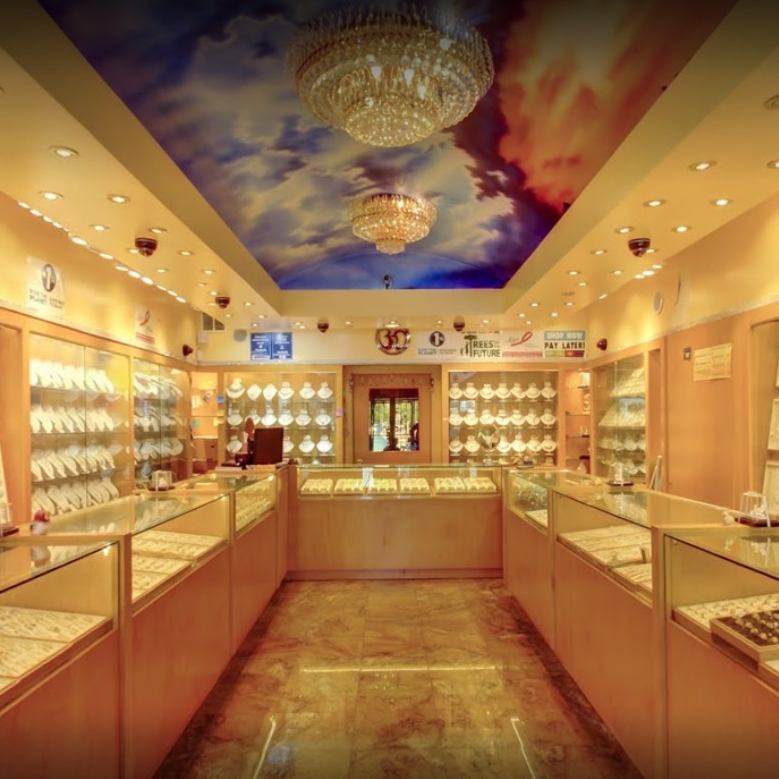Navigating the Environmental Impact of Sustainable Jewelry
by shiv kumarIn the quest for sustainability, the jewelry industry faces a critical examination of its environmental footprint. As consumers increasingly prioritize ethical and eco-conscious products, the environmental impact of jewelry production has come under scrutiny. However, within this discourse lies an opportunity for innovation and transformation. Sustainable jewelry seeks to mitigate environmental harm while offering consumers beautiful, responsible adornments. Here, we delve into the environmental impact of jewelry production and the emergence of sustainable practices shaping the industry.
Mining and Extraction: Unveiling the Ecological Toll
At the heart of the environmental debate surrounding jewelry production lies the extraction of precious metals and gemstones. Traditional mining methods, characterized by resource-intensive processes and habitat destruction, have led to environmental degradation and ecosystem disruption. From open-pit mining to chemical leaching, the environmental toll of mining operations extends far beyond the extraction site, impacting water quality, soil integrity, and biodiversity.
The Carbon Footprint of Jewelry
Beyond the extraction phase, jewelry production encompasses a series of energy-intensive processes, including refining, casting, and finishing. These processes contribute to the industry's carbon footprint, exacerbating climate change and environmental degradation. Additionally, transportation and logistics further amplify the environmental impact of jewelry, as materials and finished products traverse the globe to reach consumers.
The Promise of Sustainable Materials
Amidst these environmental challenges, sustainable jewelry offers a ray of hope. By embracing recycled metals, ethically sourced gemstones, and innovative materials, sustainable jewelry brands seek to minimize their environmental footprint. Recycled metals, sourced from discarded electronics, industrial waste, and post-consumer jewelry, reduce the need for new mining and lessen the ecological burden of extraction. Similarly, ethically sourced gemstones promote transparency and accountability within the supply chain, mitigating the environmental and social impacts of mining.
Embracing Eco-Conscious Practices
Sustainable jewelry extends beyond materials to encompass production processes that prioritize environmental stewardship. From artisanal workshops to state-of-the-art facilities, sustainable jewelry brands employ eco-conscious practices such as water recycling, energy efficiency, and waste reduction. By embracing sustainable manufacturing techniques and investing in renewable energy, these brands minimize their environmental impact while upholding the highest standards of craftsmanship and quality.
Consumer Awareness and Conscious Consumption
Central to the ethos of sustainable jewelry is consumer awareness and conscious consumption. As consumers become increasingly informed about the environmental and social implications of their purchasing decisions, they seek out brands that align with their values. Sustainable jewelry empowers consumers to make ethical choices, fostering a deeper connection between individuals and the planet. Through education, advocacy, and transparent communication, sustainable jewelry brands inspire a collective commitment to environmental sustainability and responsible consumption.
Towards a Greener Future
In conclusion, the environmental impact of jewelry production underscores the urgent need for sustainable practices and ethical consumption. By embracing recycled materials, eco-conscious manufacturing processes, and consumer awareness initiatives, the jewelry industry can mitigate its environmental footprint and pave the way for a greener, more sustainable future. Sustainable jewelry serves as a testament to the power of innovation, collaboration, and conscious consumerism in shaping a world where beauty and sustainability coexist in harmony.

















